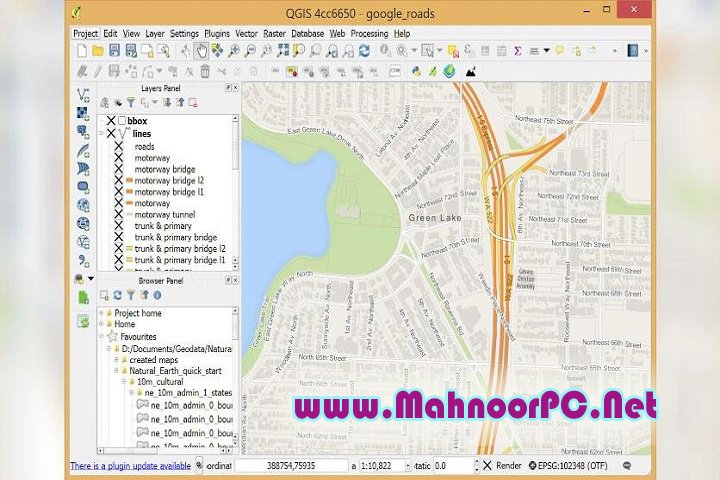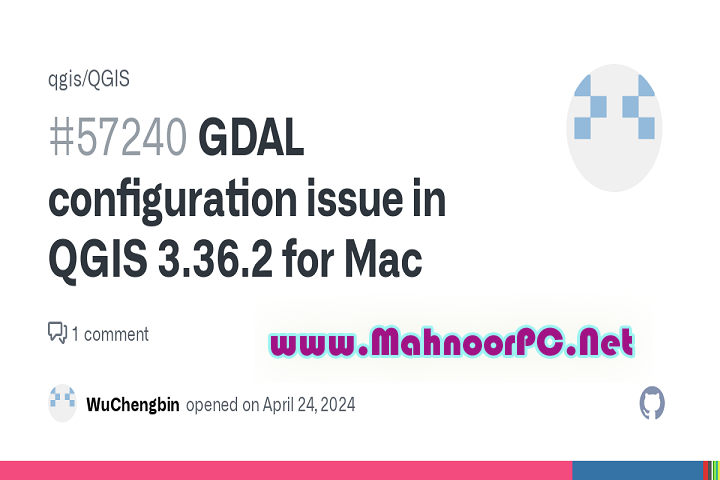Introduction to QGIS 3.36.2
QGIS 3.36.2 is a free and open-source Geographic Information System used to perform various actualizations in the analysis and visualization of spatial data. Developed among the latest versions, QGIS 3.36.2 has friendly functions to use for both beginners and advanced users. Many fields have broad uses for this software: urban planning, environmental monitoring, resource management, and much more. QGIS provides a human-friendly environment in which users can easily create, edit, visualize, analyze, and publish geospatial information efficiently.

Description and Key Points
QGIS 3.36.2 is set up to support large spectra of spatial data formats and functionalities. It has been built on the top of open-source software GRASS GIS, and MapServer, which means that it inherits a great deal of power resulting from the combination of software tools related to geospatial data management and analysis. The software can be highly customized using plugins and scripts to extend functionalities.
QGIS is continually improved by a lively community of like-minded developers and users, such that it keeps pace with the most recent developments in GIS technologies.
You May Also Like :: RealVNC VNC Server Enterprise 7.11.1

Characteristics of QGIS 3.36.2
1. Data Handling is flexible
QGIS supports many vector and raster data formats, such as shapefiles, GeoJSON, KML, and PostGIS. It makes this software flexible in handling all sorts of data.
2. Advanced
The various spatial analysis tools have multiple forms of processing for spatial data. Buffer analysis, overlay operations, network analysis, and geostatistical analysis can be many of the operations a user might carry out with this software. Most of these are essential tools in data analysis for investigating information contained in spatial data.
3. Interface Personalization
QGIS has a highly customizable interface, where toolbars, panels, or map views can be managed according to users’ wills. This flexibility, therefore, enhances user experience and productivity.
You May Also Like :: Red Button 5.99

4. Plugin Support
QGIS offers a vast library of plugins that even further enhance its functionality. Besides, users can extend their opportunities with the help of many plugins developed by the community, which include data import/export, web mapping, and advanced analysis. The user also can write their plug-in using Python.
5. Making of the Map
Other high-level cartography functionalities provided by QGIS include creating high-quality print maps where users can create detailed map layouts, add annotations, and customize symbology to communicate spatial information effectively.
6. Web Mapping
QGIS can be integrated with various web mapping services, thus making it easy to publish maps through a web service. This is very useful for sharing spatial information with the broader public using platforms like QGIS Server, GeoServer, and MapServer, among others.
7. Integration of GRASS GIS
QGIS interacts seamlessly with GRASS GIS to provide access to its extensive collection of geospatial analytical tools. Analytical abilities within QGIS are further enhanced with this.
8. Ge
QGIS also presents a suite of tools to georeference raster images so that the spatial data could be aligned with real-world coordinate locations. This is important for good-quality map creation and analysis.
How to Install QGIS 3.36.2
It is pretty straightforward to install QGIS 3.36.2 on a PC. You just have to follow these.
Download the Installer: Visit the official QGIS website and click on the download section. From there, you could choose an installer for Windows, MacOS, or Linux.
Execute the Installer : Once the download is finished, open the installer file. On Windows, this is usually a .exe file.
You May Also Like :: R&B MoldWorks 2022 SP0

According to the Installation Wizard: This wizard would guide you on how the installation will take place. You can select default settings or even adjust the installation directory and components.
Installation Wizard Complete: Once the installation wizard is complete, QGIS will be installed in your system. You can do it in your system from the start menu or even a desktop shortcut.
System Requirements
For a smooth run, QGIS 3.36.2 requires the following system requirements:
Human Readable Content Supported Operating Systems: • Windows 7 and later
macOS: Version 10.12 and later
Linux: Many distributions
Processor: Two Cores RAM — Random Access Memory
Storage: 2 GB of free disk space
Resolution: 1024x
Recommended Requirements
Operating System: Windows 10, macOS 10.14 or later, Linux (Ubuntu 20.04 LTS or equivalent)
CPU: A quad-core processor
RAM: 8 GB or more
Disk: 4 GB of free disk space
Resolution: 1920 x 1080 or
Download Link : HERE
Your File Password : MahnoorPC.Net
File Version & Size : 3.36.2 | 1.17 GB
File type : compressed/Zip & RAR (Use 7zip or WINRAR to unzip File)
Support OS : All Windows (64Bit)
Virus Status : 100% Safe Scanned By Avast Antivirus




